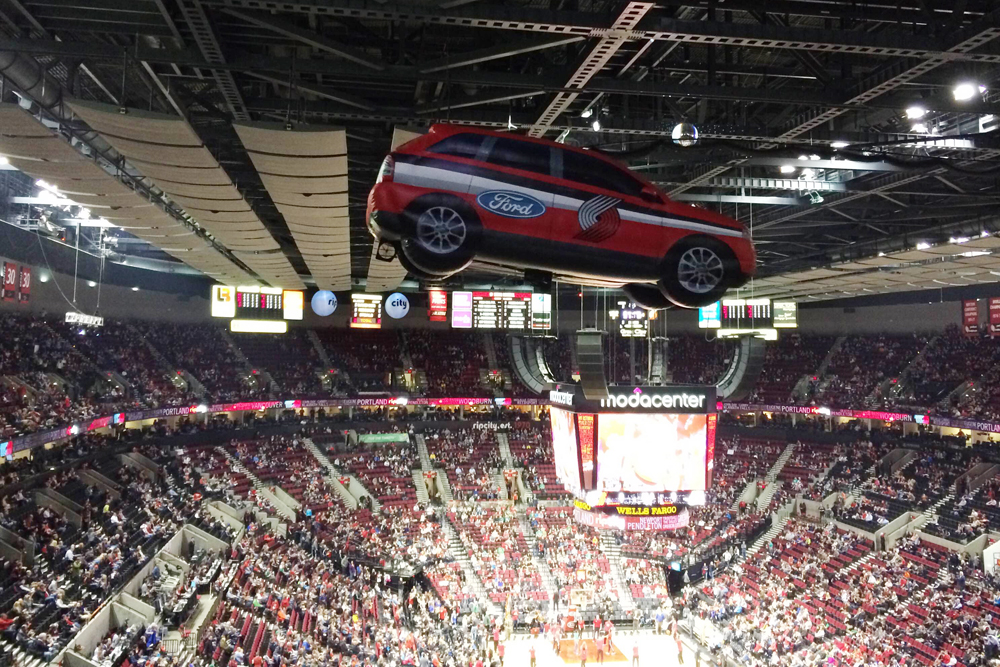“I hated the cold,” said Darryl Gilbert about his hometown in the suburbs of Chicago. “As soon as I could get out of here, I did.” Yet, after having lived in San Francisco for most of his adult life (along with stints in Los Angeles and Ashland), Gilbert has returned to his hometown with a new eye for compressed beauty and distinct scenes.
Young at heart
“I hated the cold,” said Darryl Gilbert about his hometown in the suburbs of Chicago. “As soon as I could get out of here, I did.”
Yet, after having lived in San Francisco for most of his adult life (along with stints in Los Angeles and Ashland), Gilbert has returned to his hometown with a new eye for compressed beauty and distinct scenes.
And he is excited, because on Thursday the White Gallery is opening his first show.
“He was a playwright, and actor, and a jewelry designer. He just recently started doing photography,” said Laura White of the Littman and White Galleries. “It’s definitely stylistic,” she added, explaining that she was first drawn to the work because of the contrived hues and vintage feel added by the filters Gilbert uses.
Though not representative of a perfectly trained eye, the photographs have a strange and melancholy feel to them. Cold, solid buildings appear with a dark, unfathomable message. These crowded but meticulously framed spaces capture snippets of early 20th-century architecture, as if frozen in a flood of washed-out light or rich yellow gloss.
In “Fullerton Street Parkway,” for example, the heavy yellow tint added by Gilbert’s filter adds an extreme note to the bright natural light. The sunshine visible in the open swatch of sky in the upper right-hand corner takes on a loud tone, as if at the start of a nuclear apocalypse, while the sheen covering red bricks in the center leaves an artificially aged varnish. It’s an effect compounded by the hand-typed white labels Gilbert added to the black cardboard frames.
In total, the framed photograph looks like part of a historical archive, a record of a time past, which gives the further impression that the time in question never existed. The buildings, surrounded by foliage, seem impossible, yet typing in the address on Google maps shows that they do in fact exist.
Scan left on the same street, and as soon as you cross the freeway, the side streets give way to barren grass and abandoned buildings with garbage floating along the broken sidewalks.
“I enjoy looking at the world as much as I enjoy taking the pictures,” said Gilbert in an interview over the phone from his home in Illinois, explaining that he took up photography two years ago as a way to find something worth looking at in the boring suburbs and ugly new development he had returned to.
“Sometimes I would just jump up at six in the morning,” he said. “I started noticing what beautiful clouds there are.”
Gilbert used his nature shots as a jumping-off point for beginning to find bits of extravagant beauty in the city. Though frigid in the winter and often depicted as dreary, Chicago has a rich tradition of brownstone and brick architecture that is more varied than the uniform blocks of New York or the fanciful Victorian latticework of San Francisco. As is typical in Gilbert’s photographs, the cityscapes are not a sweeping view, but individually tailored from numerous variations in the urban architecture.
“I remember when I first started, I said I didn’t want to take pictures of things that are just pretty. I wanted to take pictures of things that are interesting,” Gilbert recalled. “But I realized that beauty is enough.”
Chicago Midwest Scenic Architecture
The White GallerySMSU, room 250Opening reception: Thursday, March 6 at 5 p.m.Through March 26



